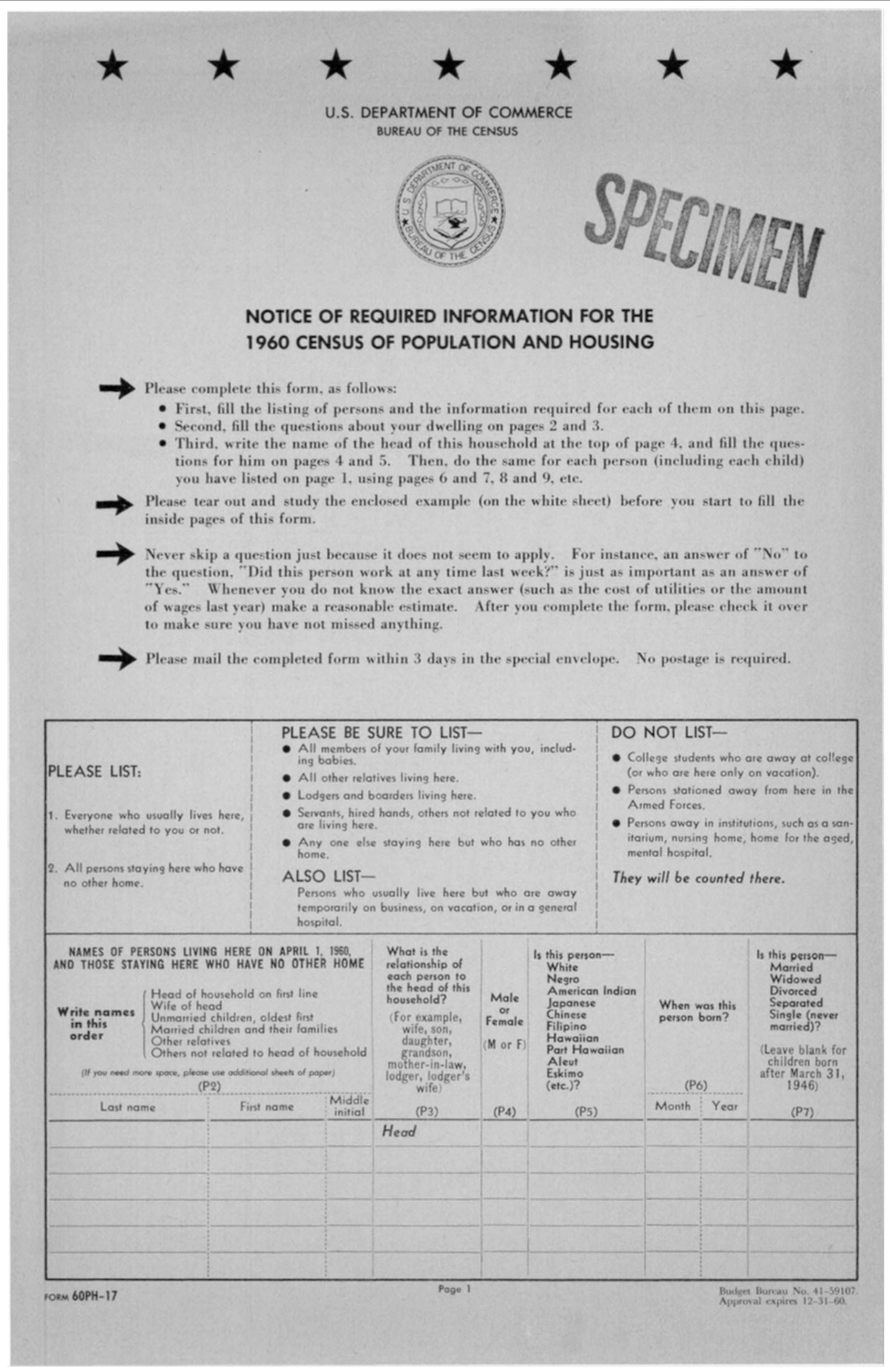Census Day (April 1) is fast approaching, and “Enumerating America” celebrates 230 years of the census-taker’s job.
Nineteenth-century census takers traversed the vast U.S. continent to find people to count and question in sparse rural areas and densely populated urban areas. In both settings, households could be large and complicated or small and difficult to locate. In 1880, each enumerator was instructed to “visit personally each dwelling in his subdivision, and each family therein, and each individual living out of a family in any place of abode.” Looking for individuals “living out of families” meant the enumerator had to “search lofts in public buildings, above stores, warehouses, factories, and stables, … cabins, huts, or tents; … riverboats, canal boats, barges, … and persons in police stations having no homes.” The instructions helpfully encouraged enumerators to keep their “eyes open” to all possibilities of “any place of abode.”
The work of the census taker was in fact so exhilarating that it was the subject of a juvenile adventure novel, The Boy With the U.S. Census (1911).
In hazardous scout duty into these fields of danger the Census Bureau leads. The Census is the sword that shatters secrecy, the key that opens trebly-guarded doors; the Enumerator is vested with the Nation’s greatest right—the Right To Know—and on his findings all battle-lines depend.
And into these fields of danger, the enumerators of the first half of the twentieth century plunged with their badge, satchel and oversized folio of blank census schedules.

Beginning in 1960 with the first mail self-enumeration, the Census Bureau focused on publicizing the census and encouraging active participation by all U.S. households. With each succeeding decennial census, the effort to publicize the count and encourage full participation became more extensive and elaborate.

Today, the Census Bureau still employs enumerators in the field to follow up with those who have not returned their self-enumeration form and identify people who may not have received a form. The 2020 census is calling all residents of the United States to “Shape your future.”
“Enumerating America” is on exhibit at the Institute for Social Research and Data Innovation, 50 Willey Hall at the University of Minnesota. Objects and artifacts from the 1850-2020 decennial censuses, on loan from half a dozen sources, are on display through May 2020.

Story by Diana Magnuson, Professor of History at Bethel University
